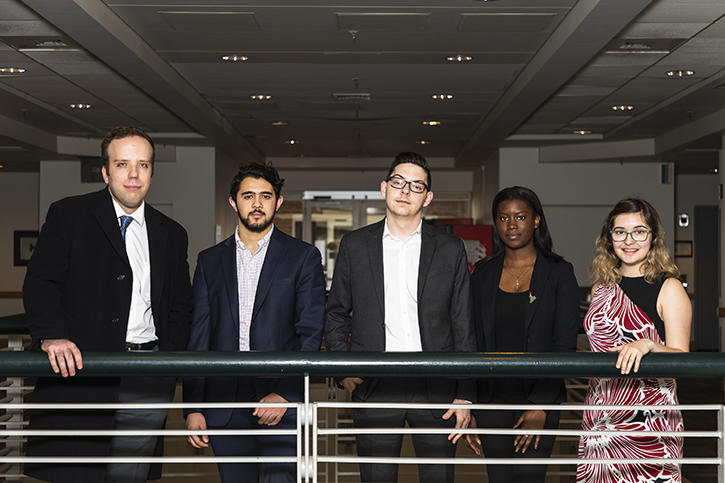George Mason University assistant professor Derek Horstmeyer has no problem trusting his finance students with a quarter-million dollars in the stock market. He’s been doing so since fall 2018 when the university’s first Student Managed Investment Fund began.
“It’s a really cool structure,” said Horstmeyer, who teaches in Mason’s School of Business. “We get some of the top students in the finance and business school and separate them into teams that follow a particular sector in the S&P 500.”

It leads to some healthy competition. At the end of the semester, the teams compete against each other and pitch how they’d like to change their group’s sector.
“Students are the ultimate decision makers,” Horstmeyer said. They’re also in charge of conducting market research and analysis and ensuring the portfolio is well diversified.
The top students in each class also take charge as members of the portfolio’s risk and investment committees. These students supervise the portfolio on a day-to-day basis—which means students are studying the market outside of class, too.
“[This class] has prepared me for a career in asset management unlike any other course I’ve taken at Mason,” said senior Justin Boileau, a finance major serving as the president of the fund’s risk committee. “Learning every day outside of class, as well as the real-world experience the course presents, has not only made me a better student, but will also make me a more well-rounded professional.”
Myriam Cisse, a senior majoring in finance who is also vice president of the fund’s risk committee, thinks similarly.
The driving force behind the class’s creation came from Trevor Montano, BS Accounting ’00, who has worked as a chief investment officer with the U.S. Department of the Treasury. He approached the school about creating the fund to give students actual experience with managing a portfolio.
Initial portfolio funds came from Mason’s Board of Trustees, and returns go back to the endowment.
Students also benefit from hearing from local guest speakers and taking advantage of opportunities in the Washington, D.C., area, such as visiting the U.S. Federal Reserve.
“What the students have learned throughout finance and in the class helps them a lot,” Horstmeyer said. “We’ve had a few students get a job because we have speakers in the finance world come in and talk to them—if they see that you’re the head of the risk committee on your resume, it’s not a bad thing.”
Overall, the class shows Mason students can handle real-world situations, Horstmeyer said. “We have matched our benchmark this year—the S&P 500—and delivered a little less volatility than our benchmark; we currently sit up approximately 15 percent since the beginning of the year.”
“The course is gratifying in that I get to have experience that I would have certainly gotten only during internships,” said Cisse. “And I am able to help generate a great return for Mason.”
